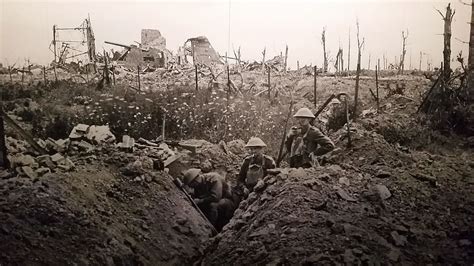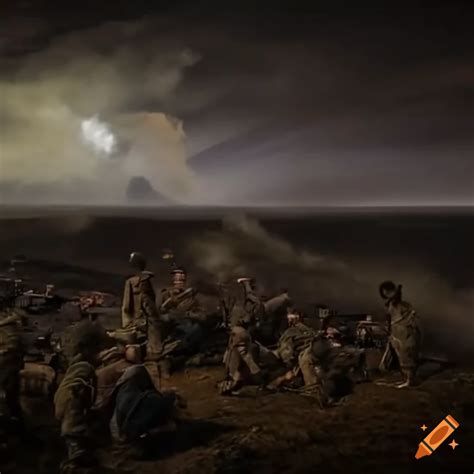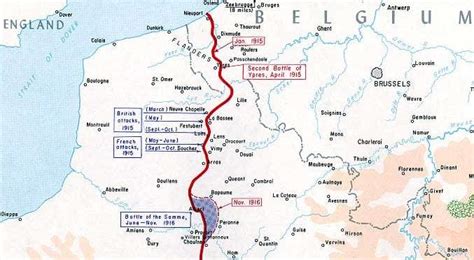5 WW1 Battlefield Tips

The Great War, also known as World War I, was a global conflict that lasted from 1914 to 1918, leaving an indelible mark on history. For those interested in exploring the battlefields of this monumental event, there are several locations that stand out for their historical significance and educational value. Here are five WW1 battlefield tips to enhance your understanding and experience of visiting these sites.
Key Points
- Visit the Somme Valley in France to understand the brutal nature of trench warfare.
- Explore the preserved trenches and craters at Verdun to grasp the intensity of the conflict.
- Stop by the Tyne Cot Cemetery in Belgium to pay respects to the fallen and understand the human cost of war.
- Walk through the Lochnagar Crater, a testament to the devastating power of mining warfare.
- Reflect at the Menin Gate Memorial in Ypres, honoring the missing soldiers of the Commonwealth.
Understanding the Historical Context

Before embarking on your journey to the WW1 battlefields, it’s essential to have a solid understanding of the historical context. The war was fought between the Allied Powers, which included countries like France, Britain, and the United States, and the Central Powers, consisting of Germany, Austria-Hungary, and the Ottoman Empire. The conflict was characterized by the introduction of new military technologies and tactics, such as tanks, aircraft, and chemical warfare, which significantly altered the nature of combat.
Trench Warfare and Its Impact
Trench warfare was a defining feature of WW1, with both sides digging extensive networks of trenches to protect themselves from the enemy. The conditions in these trenches were often appalling, with soldiers exposed to mud, rats, and the constant threat of death. Visiting the preserved trenches at sites like Verdun or the Somme Valley provides a poignant reminder of the hardships endured by soldiers during this period.
| Battlefield Location | Description |
|---|---|
| Somme Valley, France | Site of one of the bloodiest battles in history, with over 1 million casualties. |
| Verdun, France | A pivotal battle that lasted for 303 days, symbolizing the brutality of trench warfare. |
| Tyne Cot Cemetery, Belgium | The largest Commonwealth war cemetery in the world, with over 11,900 graves. |
| Lochnagar Crater, France | A massive crater created by a British mine explosion, now a memorial to the soldiers who fought there. |
| Menin Gate Memorial, Belgium | A memorial to the missing soldiers of the Commonwealth, with the names of over 54,000 men inscribed on its walls. |

Practical Considerations for Visiting WW1 Battlefields

Planning a visit to the WW1 battlefields requires some practical considerations. Many of these sites are located in rural areas, and access may be limited. It’s advisable to research the location, opening hours, and any specific rules or regulations before heading out. Additionally, considering the emotional impact of visiting these sites, it might be beneficial to plan for some downtime or reflection after each visit.
Respecting the Sites and the Fallen
It’s essential to treat these historical sites with respect, not only for the soldiers who fought and died there but also for the local communities that maintain these areas. This includes following any rules or guidelines provided, not littering, and being mindful of any ongoing ceremonies or commemorations.
What is the best time to visit WW1 battlefields?
+The best time to visit depends on personal preference, but spring and autumn are generally considered the best seasons due to the mild weather. However, visiting during the summer months can provide a more immersive experience, as the vegetation and conditions can more closely resemble those during the war.
How can I make my visit to the WW1 battlefields more meaningful?
+Reading about the history of the sites you plan to visit, watching documentaries, or even talking to veterans or their families can enhance your understanding and emotional connection to the places you visit. Additionally, taking a guided tour can provide valuable insights and stories that might not be immediately apparent.
Are there any specific etiquettes or rules I should follow when visiting these sites?
+Yes, it's crucial to be respectful. This includes dressing appropriately, not touching or removing any artifacts, and maintaining silence during ceremonies or when other visitors are reflecting. Following the rules and guidelines provided by the site management will ensure that these historical sites remain preserved for future generations.
In conclusion, visiting the WW1 battlefields is a poignant experience that can provide a deep understanding of one of the most significant conflicts in human history. By respecting the sites, understanding the historical context, and approaching the experience with sensitivity, visitors can pay their respects to the fallen and gain valuable insights into the lessons of the past.



